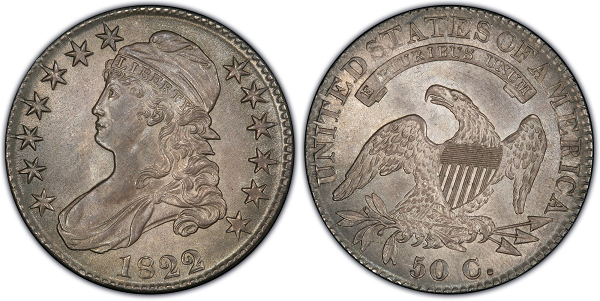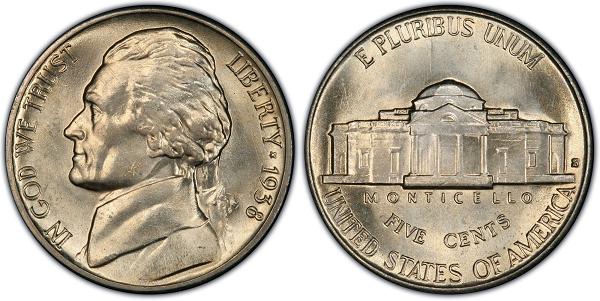Coin Collecting is No Joke… Parts III and IV
Collecting Coins with Jeff Figler
by Jeff Figler

The 1938-S Jefferson nickel is becoming a popular coin to collect. It had a relatively low mintage of slightly over four million, but collectors are going after whatever is still available of these coins.
The 1844 Liberty dime has received a great deal of publicity, and has been nicknamed the Orphan Annie dime. There were even rumors that the 1844 mintage was destroyed in the great Chicago fire, or lost in a shipwreck. However, these rumors have not been substantiated.
The 1846 Sealed Liberty dime is also now in demand primarily because of its very low mintage of 31,300. Among collectors this coin has be a “sleeper” but its popularity has seemed to increase recently.
The 1950-S Roosevelt dime is a favorite among collectors. Even though its mintage was just over 20 million there does not appear to be too many still available to the general public, so if you can get your hands on one of these hold on to it.

A 1913-S Barber quarter is a real collector’s item. There was only a mintage of approximately 40,000, making it the lowest mintage silver coin in the last hundred years. Despite that, it can be bought for several hundred dollars if you can find one, making it a good buy.
If you have a chance to obtain a 1914 Barber half dollar you’re in luck. Recently there has been a surge in popularity of half dollars and dollars, and the 1914 Barber half dollar has recently been the recipient of a lot of attention, and many of the remainder of these coins are being saved.
From the discussion in the last few columns you can see that coins of every denomination are sought. You shouldn’t think that all silver dollars are worth more than quarters or dimes. It all depends on the particular coin in question. It is a case by case situation, with, of course, condition and rarity playing a major factor in determining value.
In our remaining discussion of coins I will mention a few other coins that are both rare and valuable. Unless you are a real coin collector you probably will not run across any of these, unless of course you are the recipient of these coins by a goodhearted relative.
One such coin is, the 1933 Ten Dollar gold coin. Yes, that’s’ right, a gold coin with a ten dollar denomination. There were over 300,000 of these minted, but on March 6, 1933 President Franklin Roosevelt issued an order banning the private ownership of gold. This marked the end of gold coin production in the United States. Most of these 1933 Ten Dollar gold coins were melted and approximately only thirty or so these coins are known to exist today.
It can be truly amazing to study the evolution of coins issued in the United States. Indeed, it can be a true history lesson. Nowadays, people take it for granted that basically the same coins, as well as notes, will be issued each year. Sure, there are changes once in a while, and a new coin added here and there, and sure, some notes change in design, but by and large consistency is the order of the day. That is a far cry from days gone by.
A New Jersey engraver, Elisha Gallaudet, was asked to prepare dies for a new coin, a Silver Dollar, to replace the $1 Continental currency notes. On this Dollar appeared such phrases as FUGIO “(referring to how time flies”), “Mind Your Business”, and “Continental currency “, on the front, and “WE ARE ONE”, and “AMERICAN CONGESS” on the back. Actually, there were silver, brass, and pewter types of this coin issued. Most of the coins that have survived to this day are of pewter, with some small quantities of silver and brass dollars still in existence. This 1776 Continental Dollar is certainly one of the most desired coins today, no matter how they were made.
One of the most desirable of all American coins is the 1822 Half Eagle. It is believed that there are only three known coins of this type, and two of them are displayed in the Smithsonian Institution. To understand the rarity of this coin requires a little explaining. In 1792, when the U.S. Mint was first established, the price of gold was about 15 times that of silver. By the 1920s the price of silver had dropped, due primarily to overproduction in mines, making gold worth about 18 times that of silver. As a result, almost all of the earlier American gold coins were pulled from circulation and melted down. Only a few of the coins escaped into circulation before the entire mintage was destroyed. For several years, the 1822 Half Eagle was the epitome of U.S. gold coins.
Finally for this column, there is the 1876 –CC Twenty Cent Piece. This coin was circulated only from 1875 to 1878, and eventually became an embarrassment for the US. Mint. Many people confused this coin with the quarter dollar at the time, and was virtually doomed to failure from the beginning. Even though about 10,000 of these coins were struck, almost all were destroyed. It is believed that between 12 and 20 of these coins exist today, and most are in uncirculated condition. All, of the 1876 twenty cent pieces show a doubling of the word LIBERTY.
No such twenty cent piece exists in the U.S. anymore, although in England there is still a twenty pence coin, and actually, is very popular. Go figure.







Related posts: